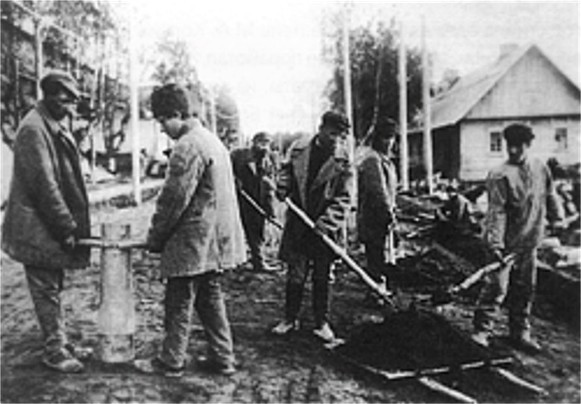Siberia
Siberia [Сибір; Russian: Сибир; Sybir]. A large portion of Russia’s territory in Asia, stretching from the Arctic Ocean south to Kazakhstan and Mongolia (3,500 km), and from the Urals east to the Pacific watershed (7,000 km). The region has an area of over 10 million sq km and a 2010 population over 25 million. In pre-Soviet usage Siberia included the Far East and had an area of 12.5 million sq km. Its southern border with the so-called Steppe krai coincided largely with the present border, except that Omsk county belonged to the Steppe krai.
Physical features. The main geomorphological regions of Siberia are the West Siberian Lowland (a huge plain of about 2 million sq km) and its southern continuation, the South Siberian Lowland; the Central Siberian Plateau, between the Yenisei and Lena rivers (average altitude 500–700 m); the mountains of southern Siberia (Altai, Saian, Yablonovyi, and Stanovoi ranges); and the mountains of northeastern Siberia (Verkhoiansk, Cherskii, and Momskii ranges). Siberia is rich in natural resources: it had 75 percent of the former USSR coal deposits, petroleum and natural gas, iron ore, rare (gold) and nonferrous metals, and diamonds.
The climate of Siberia is continental and for the most part moderately cold: subpolar and polar in the north and moderately warm and dry in the southwest. The average annual temperature is almost everywhere below 0°C (–15 to –18°C in the northeast); the average July temperature is 2 to 5°C in the extreme north and 22°C in the southwest; and the average January temperature is –16°C in the southwest and –50°C in the northeast. The world’s lowest temperatures, adjusted for elevation, were recorded at Verkhoiansk (–68°C) and Oimiakon (–71°C). Precipitation (coming mostly in the summer) ranges from 150–250 mm in the northeast to 500–530 mm in the west and reaches 2 m in the mountains. Snow cover lasts 5 to 10 months; much of the area is covered by permafrost. The dense river network empties mostly into the Arctic Ocean. The largest rivers are the Ob, Yenisei, and Lena. Ice-free for 5 to 8 months of the year, they are important transportation routes and sources of power.
Ukrainians in Siberia. Information about Ukrainians in Siberia before the close of the 19th century, which marks the onset of mass peasant colonization, is rather incidental and inaccurate. Ukrainians made a significant contribution to the economic and cultural development of the region. There were Ukrainians among the Russian traders and state servitors who colonized Siberia and the Far East in the 17th and 18th centuries and then the Kamchatka Peninsula and Alaska. There were many Ukrainians among the exiles from various social strata who were banished by the authorities to Siberia. In 1642 ‘Cherkes’ (as Ukrainians were known in Muscovy in the 17th century) families from Slobidska Ukraine (188 people altogether) were deported to the Lena River, where they arrived only in 1646–7. This deportation was followed by others in 1646 and 1649. Even more Ukrainians were deported in the second half of the 17th century. Most of them were political exiles—opponents of Moscow’s policy in Ukraine or persons suspected of ‘vacillation’ or treason. Among them were the relatives and supporters of Hetman Ivan Vyhovsky, the opponents of the Moscow appointee Ivan Briukhovetsky (1660s), Hetman Demian Mnohohrishny and his relatives (1670s), and Hetman Ivan Samoilovych, with his son Yakiv and nephew Mykhailo (1680s). After Ivan Mazepa’s defeat in the Battle of Poltava (1709) many ‘Mazepists,’ such as General Judge Vasyl Chuikevych, Col Hryhorii Novytsky, and the Myrovych family, ended up in Siberia. In 1723 Mazepa’s nephew, Andrii Voinarovsky, was exiled to Yakutsk. In the 1760s participants in the Koliivshchyna rebellion were condemned to Siberian penal colonies, and in the 1770s, after the destruction of the Zaporozhian Sich, some of its officers were exiled to Siberia. In the 19th century Ukrainian revolutionaries (the Decembrist movement), populists (Andrii Krasovsky, S. Bohomolets, Serhii Kovalyk, Ye. Kovalska, and Yakiv Stefanovych), Social Democrats, and Bolsheviks (Hryhorii Petrovsky and Mykola Skrypnyk) were exiled there by court sentence or administrative order. Participants in peasant uprisings, such as Ustym Karmaliuk, were deported there as convicts or so-called free settlers. Some Ukrainian civic and cultural figures suspected of ‘separatism’ by the authorities were transferred to government positions in Siberia. Many Ukrainians served in the Siberian Cossack hosts.
Ukrainians played an important role in the economic, administrative, and cultural life of Siberia. They were found also in the higher administrative ranks: Gen M. Sulyma, the governor general of East (1833–4) and West (1834–6) Siberia, Gen P. Kaptsevych, the governor general of Tobolsk and Tomsk gubernias (1822–6), and several other governors of Siberian gubernias were of Ukrainian origin. They were also prominent in the church hierarchy of Siberia: Filofei Leshchynsky (1702–21), Ioan Maksymovych (1711–15), A. Stakhovsky (1721–40), Arsenii Matsiievych (1741–2), and P. Koniuskevych (1758–68) were metropolitans of Tobolsk and Siberia, and Inokentii Kulchytsky (1727–31), Inokentii Nerunovych (1732–47), and S. Krystalevsky (1753–71) were bishops of Irkutsk. They surrounded themselves with clergy, mostly of Ukrainian origin, who contributed significantly to the cultural development of Siberia. Some of them (notably Hryhorii Novytsky) did research on Siberia and the Far East.
The mass immigration of Ukrainian peasants to Siberia began in the late 1880s. In 1885–1914, 1,742,000 people (almost all of them Ukrainians) from nine Ukrainian gubernias and over 2,000,000 from all Ukrainian territories emigrated beyond the Urals. Of these, almost 35 percent settled in Siberia; the remaining settled mostly in the Steppe krai (now Kazakhstan) and the Far East. According to the 1897 census there were 142,000 Ukrainians in Siberia, 120,000 of them in the western regions. The real figure was unquestionably much higher. The proportion of Ukrainians in the population was highest in the southwestern part of Tomsk and Tobolsk gubernias. This sort of concentration reflected a desire by the Ukrainians to settle near their own people and in a forest-steppe or steppe environment with which they were familiar. During and immediately after the First World War there was little immigration to Siberia from Ukraine. Hence, the Ukrainian population of Siberia in 1914 was only slightly lower than in the 1926 census. This figure was about 1 million, or 12 percent of the total population. Since in fact about 19 percent of the inhabitants of Siberia originated from Ukraine, the actual figure was probably higher.
1917–20. The February Revolution of 1917 in Russia sparked a vigorous political movement in Siberia. Ukrainians created various organizations: the Ukrainian Free Community in Omsk, the Regional Council in Tomsk, the Altai Gubernia Council in Kainsk, and other associations in Slavgorod, Kurgan, and Biisk. Branches of Kyivan relief institutions for deportees from Galicia and Bukovyna and captured Ukrainian soldiers of the Austrian army were set up in Omsk and other towns. Some Ukrainian POWs became active in Ukrainian communities in Siberia. Ukrainian papers appeared, among them Ukraïns’kyi holos in Omsk and Ukraïns’ke slovo in Tomsk. At the same time military organizations were formed, and at the end of 1917 several separate Ukrainian units were set up, including the Sahaidachny Battalion in Omsk and a battalion in Irkutsk. At the beginning of August 1917 the First Ukrainian Congress of Siberia took place in Omsk and established the Supreme Ukrainian Council of Siberia. Headed by H. Kontsevych (vice-president, M. Novoselsky), the council sent a delegate to the Central Rada in Kyiv.
In early October 1917 the democratic parties of Siberia held a conference which proclaimed Siberia’s autonomy and convened the Extraordinary Congress of Siberia in Tomsk on 6–15 December 1917. The congress set up a provisional government consisting of the Siberian Provisional Oblast Duma (which included five Ukrainian deputies), an oblast soviet (responsible to the Duma), and an executive body (which included a Ukrainian member named Sulyma). The congress greeted the Central Rada in Kyiv on the proclamation of the Third Universal of the Central Rada, and the oblast soviet refused (7 January 1918) to recognize the Bolshevik government in Petrograd. At the end of January 1918 the Tomsk soviet of workers and soldiers disbanded the Siberian oblast council, but the provisional government continued to operate. Thus, there were two governments in Siberia. The position of the oblast council and the Provisional Autonomous Government was bolstered by the landing of Japanese and British troops at Vladivostok in April, the offensive of the Czechoslovak Corps against the Bolsheviks in May, and the landing of American troops in August 1918.
The Second Siberian All-Ukrainian Conference took place in Omsk on 11–13 August 1918 while these events unfolded. It was an important milestone in the history of Ukrainians in Siberia. It demanded that the Siberian oblast duma proclaim the independence of Siberia, give self-government to the various nationalities (including Ukrainians), and form a Siberian army for the country’s defense. These hopes were quickly dashed. The Volunteer Army had entered the military contest in Siberia and had forced the abdication of the democratic Provisional Autonomous Government in November 1918 to the central Russian Provisional Government (later headed by Admiral Aleksandr Kolchak). This development represented a major setback to the Ukrainian movement in Siberia. A second major blow for the Ukrainians occurred in late 1919, when the Sahaidachny Battalion was dissolved after suffering heavy casualties against the Bolsheviks on the Ural front. This disaster was followed in January 1920 by the defeat of Kolchak’s forces by Bolshevik forces, who then advanced and had taken control of the entire Far East by November 1920.
1920s. The population of Siberia remained fairly stable during and after the First World War, with relatively few casualties during the Revolution of 1917 but little influx, since the flow of immigrants from west of the Urals was interrupted until the end of the civil war. Immigration increased somewhat after 1924, with a planned resettlement program. As a result the population of Siberia grew only modestly, from about 10 million at the beginning of 1915 to about 11 million (including Ishim and Kurgan okrugs, which belonged officially to Ural krai) by the end of 1926. The percentage of Russians, Ukrainians, and Belarusians together was practically the same (86.9) as in 1911 (86.7); the indigenous population declined from 10.6 to 7.5 percent.
Ukrainians lived mainly in large groups on the arable lands of southwestern Siberia, which was part of the so-called Central Asian Steppe krai. In the Siberian part of this Steppe krai, consisting of almost the entire Slavgorod and parts of Omsk and Kamensk okrugs, Ukrainians formed a majority of the population: of 580,000 inhabitants, 310,000 (53.4 percent) were Ukrainians, 200,000 (34 percent) were Russians, and 25,000 (4.3 percent) were indigenous peoples. In the 17 raions of the Siberian part of the Central Asian Steppe krai Ukrainians formed a majority in 12. Another 400,000 Ukrainians lived in the part of west Siberia where Russians formed a majority. There they accounted for 10 to 40 percent of the population and lived usually in separate villages.
Most of the 115,000 Ukrainians in east Siberia settled on pockets of fertile chernozem soils. According to the 1926 census they constituted 8.8 percent of the total rural population. Their largest urban concentrations in Siberia were in Omsk (9,700), Slavgorod (4,100), Krasnoiarsk (1,600), Irkutsk (1,300) and Tomsk (1,200). Ukrainians accounted for a notably high percentage of the population in Slavgorod and Omsk okrugs.
Since the 1930s. Siberian development played a key role in the long-range economic planning of the Soviet Union with the institution of five-year plans (see Five-year plan). The region was to be developed for the exploitation of its industrial natural resources. Starting in the 1930s a number of measures were taken to facilitate these changes: new energy sources (such as the Kuznetsk Coal Basin) were developed; a second Siberian railway line was built; and mining and metallurgical facilities were built in Norilsk in order to obtain the strategic nickel and stimulate development in the far north. Millions of victims of Joseph Stalin’s terror, imprisoned in Siberian forced-labor camps, worked and died in the process. Some impressive gains were made in industry; they are reflected in the growth of the urban population from 1.0 to 4.4 million (from 9.2 to 31.3 percent of the total). In the same period agriculture declined, largely as a result of the collectivization campaign.
During the Second World War Siberia’s economy grew at a tremendous pace as a massive effort was made to supply the Soviet Union’s military demands. About one million people and hundreds of industrial plants (mainly from Ukraine) were evacuated there; hundreds of new factories were built; and coal mining (to replace the Donets Basin deposits), heavy industry, and the chemical industry were expanded. Gross industrial production almost doubled in 1940–5. In the postwar period the region continued to grow, with special emphasis placed on heavy industry, machine building, coal and oil extraction, the chemical industry, and hydroelectric power. Agricultural production has also grown, mostly as a result of an increase in the area sown.
As the Siberian economy expanded, its population grew through natural increase and as a result of immigration from the western regions of the Soviet Union. In the 1950s, because of hydroelectric power dam construction and the development of resource-based industries, population growth was more rapid in east than in west Siberia. By 1960–73 the emigration of people from Siberia, particularly west Siberia, was greater than the immigration thereto. In the 1960s the population exchange between Ukraine and Siberia proved to be in Ukraine’s favor for the first time: in 1968–9, 50,000 Ukrainians emigrated to Siberia, and 68,000 Siberians came to Ukraine (most of them returnees). Ukrainian workers continued to take temporary (two- to three-year) jobs in Siberia, particularly on major projects in East Siberia (the Baikal-Amur Mainline) and the northern districts of West Siberia (the oil and gas fields), because wages in Siberia were two to three times higher than in Ukraine.
The national composition of Siberia has changed considerably in the last 70 years. From the end of the 1920s there has been a steady flow of Ukrainians into Siberia: deportees and prisoners of concentration camps (where Ukrainians constituted a majority), settlers of virgin steppes in the 1950s, and voluntary workers attracted by better living conditions and a more open political atmosphere. In the 1940s between 300,000 and 400,000 Germans from the Volga region (see Volga German ASSR) and Ukraine were resettled in Siberia. The 1959 and 1970 censuses provide nationality figures only for separate oblasts and not for Siberia as a whole, and tend to underestimate the number of Ukrainians and other non-Russian Europeans. Siberia’s national composition according to the 1979 census is shown in Table 1.
Between 1926 and 1959 the number of Ukrainians and indigenous peoples declined in absolute and relative terms, and the number of Russians increased. The group called ‘others’ grew, mainly because of the influx of Germans. In the 1960s the number of Ukrainians and other European non-Russian people continued to decline (in part because of the Soviet regime’s policy of Russification), but the absolute and relative numbers of indigenous people increased, mostly because of their high birth rate (Table 2).
The distribution of Ukrainians in Siberia underwent great changes, according to the Soviet censuses. Their numbers in West Siberia fell, dramatically, from 738,000 (9.8 percent of the population) in 1926 to 463,000 (3.8 percent) in 1959 and 360,000 (2.7 percent) in 1970, and then rose, with new immigrants, to 387,000 (3.0 percent) in 1979; the number of Ukrainians in East Siberia grew from 115,000 (3.4 percent) in 1926 to 229,000 (3.3 percent) in 1959, then fell to 220,000 (2.7 percent) in 1970, and rose again to 227,000 (2.8 percent) in 1979. The number of Ukrainians declined mainly in southwestern Siberia, where in the 1920s they accounted for one-third or more of the population (in the part that belonged to the Central Asian Steppe krai). Their numbers increased in east Siberia, however, particularly in the far north. In the Yakutsk ASSR, for example, Ukrainians increased from 100 (0.03 percent) in 1926 to 1,200 (0.2 percent) in 1959, 20,300 (3.1 percent) in 1970, and 46,300 (5.4 percent) in 1979. By contrast, the number and proportion of Ukrainians in Omsk oblast in 1979 was only 103,800 (5.3 percent), a decline from 104,600 (5.8 percent) in 1970, 128,000 (7.8 percent) in 1959, and 166,000 (22.2 percent) in 1926 (within the present Omsk oblast borders).
The figures on national composition do not coincide with the figures on language use, because increasingly the non-Russian immigrants and their descendants had adopted Russian. In the 1959 census 54 percent of Ukrainians in Siberia listed Ukrainian as their mother tongue, compared with 49.3 percent in 1979. In 1979 only 85,000 Ukrainians (12 percent) spoke Ukrainian fluently. Linguistic Russification is higher in those regions where Ukrainians settled at the turn of the 20th century, and lower in areas of more recent settlement, such as East Siberia and the far north. Soviet statistics on nationality and language were not entirely reliable. It is probable that there are over 2 million Siberian inhabitants of Ukrainian origin. The long-term Russification of Ukrainians in Siberia has been facilitated by urbanization and the mixing of different nationalities in the state farms. A high percentage of Ukrainians have intermarried. At the same time there are no Ukrainian schools (at the beginning of the 1930s they operated briefly in West Siberia) and no local Ukrainian press or books. The other peoples of European origin (except for the Germans) have been subjected to the same kind of Russification. Russification, however, has made little headway among the more numerous of the indigenous peoples who have had their own autonomous republics or autonomous oblasts.
BIBLIOGRAPHY
Kiselev, S. Drevniaia istoriia Iuzhnoi Sibiri, 2nd edn (Moscow 1951)
Pokshishevskii, V. Zaselenie Sibiri (Irkutsk 1951)
Problemy izucheniia natsional’nykh otnoshenii v Sibiri na sovremennom etape (Novosibirsk 1967)
Istoriia Sibiri s drevneishikh vremen do nashykh dnei, 5 vols (Leningrad 1968–9)
Zapadnaia Sibir’ (Moscow 1971)
Morozova, T. Ekonomicheskaia geografiia Sibiri (Moscow 1975)
Krestianstvo Sibiri v epokhu feodalizma (Novosibirsk 1982)
Krestianstvo Sibiri v epokhu kapitalizma (Novosibirsk 1983)
Obshchestvennyi byt i kul’tura russkogo naselenniia Sibiri, XVIII–nachalo XX v. (Novosibirsk 1983)
Stebelsky, I. ‘Ukrainian Peasant Colonization East of the Urals, 1896–1914,’ Soviet Geography, 1984, no. 9
Kul’turno-bytovye protsessy u russkikh Sibiri (Novosibirsk 1985)
Volodymyr Kubijovyč, Oleksander Ohloblyn, Ivan Svit
[This article originally appeared in the Encyclopedia of Ukraine, vol. 4 (1993).]
 built in Cossack Baroque style.jpg)
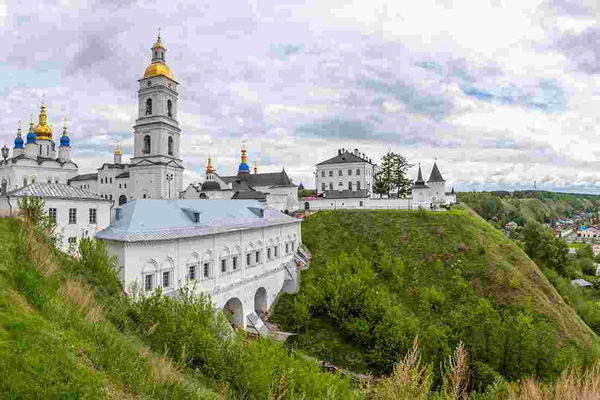
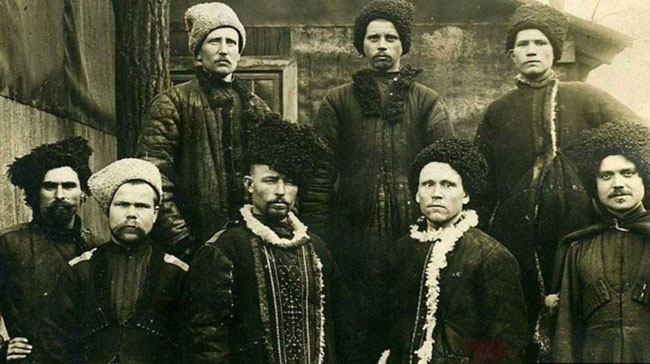
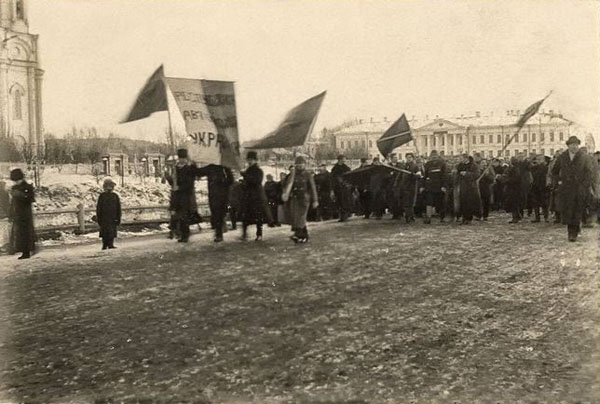
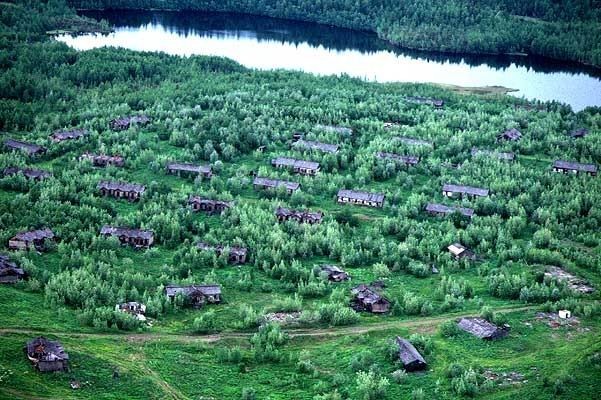
 forcedlabor camp.jpg)
